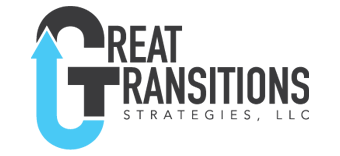As you examine your path, ask yourself the question: “What got me here?”
This question generates all kinds of answers such as character traits, the names of people, and lessons learned. Here are some possible examples;
- Tenacity and hard work, diligence
- Sheer Luck, a well-executed plan
- One very insightful mentor
- The painful lesson of being fired
- The chance I took taking on ________
Write your own list.
__________________________
__________________________
__________________________
What does the list tell you?
__________________________
Go back to the beginning of your journey when you were in your very first leadership position. Mentally take on the view as your former self. The excitement of your first position with all kinds of unknowns in front of you. Then the first leadership task assigned to you. Who was around you and what emotions were driving you then?
Now, write how your former self defined leadership at that time.
__________________________________________________________________________
In your current role, think of all those around you and the daily emotions that drive you. What is your definition of leadership now?
__________________________________________________________________________
What changed? How have you evolved over time and what were the forces acting on you? This may take a little time and reflection. I am not just talking about what changed in the definition, but what changed in your perception of what leadership is.
Leadership Considerations
There are so many considerations with leadership. How do you choose where to focus? My intent is to introduce broad areas that will spur further thought and exploration of details. Those details will hopefully reveal the nuances of your current leadership and how it was influenced by your journey. The four areas are: transactional leadership, transformational leadership, power/authority, and relationships.
These are the four areas that I believe help us define our own leadership. When we understand these four areas, we are able to assess and garner a view of our own leadership and the leadership of others.
- Transactional leadership: leadership through formal authority and position of responsibility in an organization. It relies on exchanges between leaders and followers. Leaders lead through transactions such as pay for work, rules, incentives, policy, and organizational structure.
- Transformational leadership: is a process where leaders and followers engage in a mutual process of ‘raising one another to higher levels of morality and motivation.’
- Power/Authority: where does the leader get his/her leader power and or authority
- Relationships: what type of relationships does the leader engage in?
Now you are ready to make a full assessment of your personal journey. Take each position and add some short comments or bullets about your leadership, addressing each of the four areas. Here is an example of a first leadership position.
Newly hired as an assistant production engineer for a hardware company. I had the responsibilities of managing 5 programmers and technicians in the production and functionality of the hardware and associated software developed by my team.
- Transactional Leadership – I spent most of my time in this area of leadership. I used the metrics of time cards, hours spent, budget, and schedule to get me through each week.
- Transformational leadership – I took some time to get to know my team and determine their technical capabilities. Knowing their technical capabilities was extremely important to me as it defined their production potential. It took a long time to build up personal rapport with each member. I was afraid to get close with anyone as I wanted to maintain my authority over them.
- Power/Authority: I felt my power and authority came from my position and ability to grant overtime and hold the team to a schedule.
- Relationships: My relationships with each team member were distant. I did not take the time to get to know anyone very well. As time went on, I became close with my senior program manager and scrum master. I came to realize how important she was to our team’s success. She also provided me valuable insights into my team.
This exercise will add to your depth and insight to your timeline. In the introduction you showed a chronological sequence of your journey. Now you added some important context to each stop along your path.






